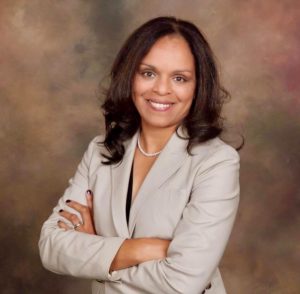Office Reopening Tips and Tricks
 By Dr. Rina Campbell
By Dr. Rina Campbell
When the COVID-19 pandemic unfolded in mid-March, dental offices in our area started closing in compliance with the state and government recommendations. All routine dental care in the region was suspended. We really did not know what was going to happen. Amidst the explosion of information available online and through social media, it was difficult to identify reliable research evidence and guidance to approach the COVID-19-related dental cases. At the same time, the need for emergency dental care was critical. It was a time of great uncertainty. Should we close the office completely? We were really scared of the virus, like everyone else.
I knew firsthand of the difficult situation in the largest hospital network, as my husband is a physician and updated me on the conditions at the hospital and the overwhelmed intensive care units.
As the days went by, I realized that there was a role we had to play. Many patients in pain had nowhere to go. They needed urgent care. I felt the moral duty to serve the community, to help the most vulnerable, and to relieve their pain. Moreover, it was a way to help reduce the influx of patients to the local emergency rooms already burdened with the increasing number of COVID-19 patients.
My team was feeling the same way. So, we gathered ourselves, mentally, and emotionally and developed a plan. We equipped ourselves with the appropriate PPE to keep us and our patients safe. The patients were triaged over the phone to ensure that only true emergency cases were seen. One patient at the time, we performed temperature checks, clinical evaluations, etc. And together, we treated emergency patients on a daily basis.
As the weeks passed, we experienced a surge in emergency calls. Local dentists, referring partners and patients were reaching out for emergency endodontic care. Patients came from neighboring cities as far as two hours away to get care. They were really desperate and scared. They all had something in common – they felt their lives had completely changed and had to face the new reality and consequences of the COVID-19 pandemic.
This was a roller coaster ride!! We will never forget this challenging time. It was a moment of coming together. A moment that reminds us to support each other, and to think WE instead of ME.
We are very thankful we were in the position to serve the community during this difficult period. We are grateful for the amazing referring partners that we work with.
Across America, dental offices are beginning to reopen. We should see this moment as an opportunity to re-assess and adapt to the new reality. An opportunity not only bounce back but bounce forward. I am optimistic about the future of dentistry. I am confident that our specialty, endodontics, will continue to thrive and grow.
I want to share with you some tips and changes we implemented in accordance with recommendations of CDC, ADA, AAE and local governing bodies. Every office is set up differently and this is not a one-size-fits-all solution, but rather, what has worked well for our office and may work for yours. Remember that this is an evolving situation, so we should continue to do the best we can until more information becomes available.
Prior to Coming to the Office:
- Patients screened over the phone to evaluate for COVID-19-related risk factors and symptoms
- Patients required to fill all paperwork for registration and medical history online before coming to the office, thus reducing time spent in office and limiting touch surface contact (this used to be optional before)
At the Office:
- Temperature check with infrared thermometer for every patient upon entry into the office
- No more than two patients allowed in the office at the same time
- Chairs spaced at least six feet apart
- Accompanying relatives and/or friends wait in the car
- Patients required to wear masks all the time inside the office and remove them only during examination or procedure
- Removal of frequently touched objects in waiting area (magazines, newspapers)
- Installation of glass shield as physical barrier at reception desk to limit close contact between personnel and patients
- Daily temperature check for dental office staff
- Use the recommended PPE including N95 masks, face shield, hair protective caps and gowns
- Replacing reusables with disposables. For example, disposable protective eyewear instead of plastic googles for the patients
- Installation of automatic touchless soap dispensers and hand sanitizers
- Installation of air purifiers in waiting room and operatories (OPs)
- Increased frequency of disinfection of frequently touched surfaces, door handles, bathrooms, front desks, etc.
- Minimizing overlapping dental appointments
In the Operatories:
- Windows are frequently opened to allow fresh air to circulate.
- Pre-operative CBCT scans for most cases to expedite the treatment i.e. estimated working length, number of canals, anatomy, etc.)
- Hydrogen peroxide oral rinse prior to procedure to reduce the level of microorganisms in aerosols during dental procedures
- Use of two high-volume evacuation suctions during access opening
I firmly believe that with all these precautions, along with the consistent use of rubber dam, the risk of transmission is minimized.
Rina Campbell, D.D.S., is a Diplomate and maintains a private practice limited to endodontics in Northern California.




